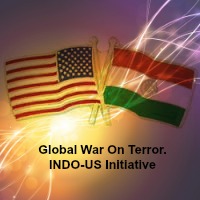Rethinking Military Intelligence
4th Generation Warfare:Doctrinal Adaptations to Asymmetric Enemy

CHE GUEVARAS MISTAKES-LEARNING
· Counterintelligence
· Guerrilla Warfare
Che’s Catastrophic Counterintelligence Failures
- March 20, 2014 at
- Samuel Culper III
I’ve never been a huge fan of Che Guevara’s foco theory, which states that a small contingent of guerrillas can start a revolution and build popular support once operations are underway. There’s too much hill to climb and too many potential missteps; the support is either there or it’s not. As opposed to Mao’s grassroots efforts, Che believed that small bands of guerrilla fighters could foment popular support for themselves, and would be hailed as national saviors and receive the aid of the populace.
In a previous article, we talked about why Occupy Wall Street failed: they couldn’t hold popular support for their tactics, even if they did maintain it for the cause they represented. Applied to North America, I’m not convinced that Che’s foco theory would work because of the violence involved in guerrilla tactics. We’re not there yet (nationally) and I’m not willing to stake my life on Che’s theory, even if it sounds good.
But let’s shift fire and talk about Che’s other catastrophic shortcoming: counterintelligence (CI), specifically in Bolivia. As we should all be learning, the populace really is or can be the greatest CI threat. When we think about CI, we tend to imagine spies, moles, informants and source networks penetrating into the deepest and innermost circles of adversarial organizations. That’s not an incorrect view of CI, however, I’d rather state the case that the populace is the greater (human) CI threat in the domestic context. (The greatest CI risk is likely what, where, and how we communicate electronically, and the greatest CI threat is the ability of adversarial organization to collect and exploit those communications.)
When we look at Coalition Force (CF) operations in Iraq and Afghanistan, we relied heavily upon source networks and local villagers who would provide us intelligence information on extremists and insurgents. In certain areas, we did that quite effectively. In others, we were considered worse than outsiders by many, if not most residents, and therefore could never gain the trust of the populace. Those effects made themselves quite apparent through their non-cooperation and sometimes disinformation, even while we were building schools and digging wells for them. These people were so pro-Al Qaida in Iraq (AQI), pro-Jaysh al-Mahdi (JAM), or pro-Taliban (TB) that we just couldn’t get anything useful from them. That’s an effective use of the populace because while we were trying to collect information from the locals, they were not only denying information to us, they were reporting on CF movements and activities back to their respective extremist/insurgent groups.
Back to the flip side, in areas where these extremist/insurgent groups did not enjoy popular support, the locals fed us intelligence information and worked with CF in order to rid themselves of these groups whose members sought to hide among them, tax and threaten them. Using the populace as your shield, grocery store, and personal piggy bank is not a good way to curry the favor of the populace, especially when you don’t even speak their language, much less understand and remain cognizant of their norms and culture.
As guerrilla movements grow, so do their support zones, which can wreak havoc on recruiting and put entire organizations at great risk to the CI threat. The more individuals you don’t know joining your organization, the less protected you’ll be from informants. And that was one of Che’s problems in Bolivia, where he and his revolutionary guerrilla movement ultimately died.
For one, his Bolivian fighters were infamously clumsy in their tradecraft and compartmentalization that should have protected their secrets. There were locals and marginally-affiliated members who were allowed to know Che’s location and specific details about his guerrilla columns. Recruiting posed a major risk to the organization because training new fighters not just in combat skills but in tradecraft and Operations Security (OPSEC) skills is a monumentally difficult task in a place where recruits are already at a steep disadvantage from their limited frame of reference.
There was also the case of the two Che/guerrilla fanboys – Regis Debray and Giro Roberto Bustos. Debray was an intellectual and leftist professor, and Bustos a painter and leftist sympathizer. Posing as journalists, the two made contact with Che’s guerrillas and were led to Che’s camp for a meet and greet. The two later tired of the guerrilla life and decided to head back to Havana to enjoy the conveniences and probable minor celebrity status as Che’s personal friends. During their journey back to civilization, the two were captured by Bolivian Army forces. Debray started singing (I hate to make a blanket stereotype but I picture Debray as a soft, possibly effeminate, member of the Marxist intelligensia), and Bustos (the painter) drew portraits of the guerrilla fighters. (I know; this stuff can be pretty comedic.)
“Tania the Guerrilla” was previously a member of (essentially) the Stasi, where she first met Che in East Germany. She was later tasked with assisting Che’s cadre in the Bolivian Area of Operations (AO). While she traveled to meet up with Che and his band of guerrillas, she parked her vehicle (unattended) in a rented parking garage in a nearby town. During aggressive searches, the Bolivian Army discovered her vehicle which contained guerrilla-related documents along with evidence of her pro-Leftist/guerrilla work in Bolivia. That tipped off the Bolivian Army to the area and certainly encouraged continued CIA-aided search and destroy, counterguerrilla missions.
Then there was the case of the ten-man guerrilla element who befriended and trusted a local grocer, from whom they purchased food and supplies. The guerrilla leader inquired about where his team could cross a river, to which the grocer obliged with an answer (he also nearly simultaneously alerted Bolivian authorities). While the guerrilla unit was halfway through the river, the Bolivian Army ambushed them, killing all but one (including Tania the Guerrilla, Che’s alleged lover; hey, it gets lonely in the jungle).
Cumulatively, multiple and costly lapses in CI and the failure to maintain even basic OPSEC led to the demise of Che Guevara and his merry band of Communists. To make matters worse, Che’s guerrilla columns did not previously enjoy popular support, and could not gain it, which contributed to his greatest CI threat: the populace, who frequently reported on his movements and whereabouts.
Che wrote in his diary (ref: the Bolivian populace):
Talking to these peasants is like taking to statues. They do not give us any help. Worse still, many of them are turning into informants.
And that’s why I worry so much about lack of popular support – not for the Constitution but for the tactics of those who say they’ll attempt to restore it. The popular support for those tactics just isn’t there right now. So should they ever read this blog, I implore them to learn from the failures of Che’s foco theory and his lack of popular support. No popular support, no victory.
We’re in a foot race towards a finish line where the reward is hard tyranny or popular support for restoring Liberty. Whomever should cross the finish line first will be the first temporary victor in the Union, putting his adversary at a severe disadvantage. Knowing that popular support not just for ideals but also for tactics is a major prerequisite for victory, my advice then is to focus more on building popular support (developing the human terrain) among your regional neighbors and kin as equally as you prepare to put your heel on the throats of tyrants. Take it for what it’s worth.


